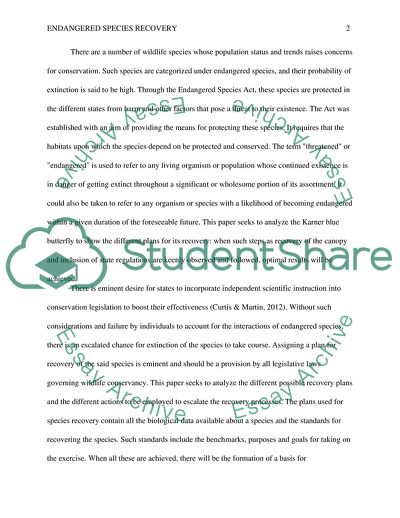Cite this document
(Endangered Species Recovery Plans Assignment Example | Topics and Well Written Essays - 1500 words, n.d.)
Endangered Species Recovery Plans Assignment Example | Topics and Well Written Essays - 1500 words. https://studentshare.org/environmental-studies/1832693-review-of-a-threatened-or-endangered-species-recovery-plan
Endangered Species Recovery Plans Assignment Example | Topics and Well Written Essays - 1500 words. https://studentshare.org/environmental-studies/1832693-review-of-a-threatened-or-endangered-species-recovery-plan
(Endangered Species Recovery Plans Assignment Example | Topics and Well Written Essays - 1500 Words)
Endangered Species Recovery Plans Assignment Example | Topics and Well Written Essays - 1500 Words. https://studentshare.org/environmental-studies/1832693-review-of-a-threatened-or-endangered-species-recovery-plan.
Endangered Species Recovery Plans Assignment Example | Topics and Well Written Essays - 1500 Words. https://studentshare.org/environmental-studies/1832693-review-of-a-threatened-or-endangered-species-recovery-plan.
“Endangered Species Recovery Plans Assignment Example | Topics and Well Written Essays - 1500 Words”. https://studentshare.org/environmental-studies/1832693-review-of-a-threatened-or-endangered-species-recovery-plan.


